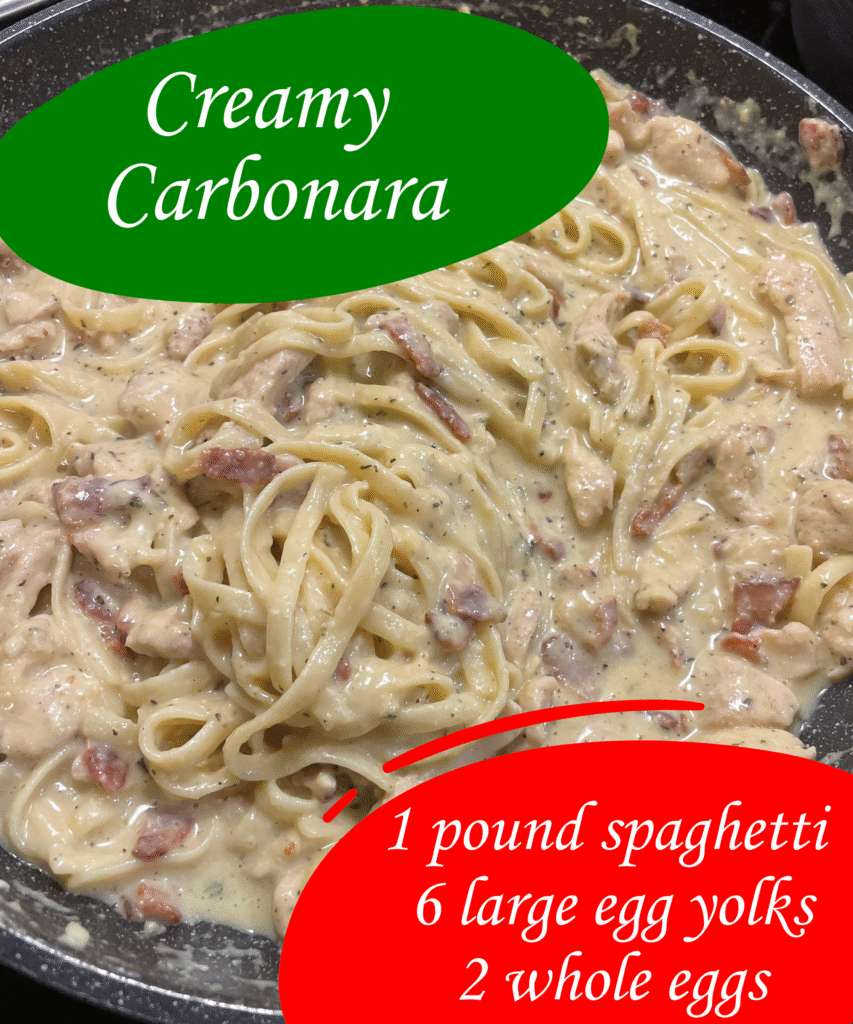The first time I made carbonara, I nearly cried into the pan. Not from the onions—there weren’t any—but from the heartbreak of watching silky egg yolks transform into scrambled disasters the moment they hit the too-hot pasta. My Italian grandmother would have been mortified. I stood there, wooden spoon in hand, staring at what looked more like breakfast gone wrong than the Roman masterpiece I’d dreamed of creating.
That failure taught me everything I needed to know about carbonara: it’s not just a recipe, it’s a lesson in patience, timing, and trust. The dish that seems so simple on paper—just eggs, cheese, guanciale, and pasta—is actually a delicate dance between heat and technique. Years later, after countless attempts and small victories, I’ve learned that carbonara isn’t about perfection; it’s about understanding the whispered language between ingredients. The gentle sizzle of guanciale rendering its fat, the satisfying resistance of al dente spaghetti, the moment when everything comes together in creamy, silken harmony. This isn’t just dinner—it’s edible poetry written in the universal language of comfort food.
Table of Contents
What Makes This Carbonara Special
This carbonara captures the soul of Roman trattorias while honoring the technique that transforms simple pantry ingredients into something extraordinary. No cream, no shortcuts, just the alchemy of eggs and pasta water creating a sauce so creamy you’ll question everything you thought you knew about Italian cooking. The secret lies in temperature control and timing—two elements that turn cooking from mere instruction-following into an intuitive art form.
Ingredients
The Foundation:
- 1 pound spaghetti or spaghettoni
- 6 large egg yolks
- 2 whole eggs
- 1 cup freshly grated Pecorino Romano cheese, plus extra for serving
- 6 ounces guanciale or pancetta, diced into small cubes
- Freshly cracked black pepper
- Sea salt for pasta water
The Finishing Touch:
- Extra Pecorino Romano for serving
- Additional black pepper

Step-by-Step Instructions
The ritual begins with water—lots of it. Fill your largest pot and set it over high heat, adding enough salt that it tastes like the sea. This isn’t just cooking water; it’s the liquid gold that will bind our sauce together. While you wait for those aggressive bubbles to appear, turn your attention to the guanciale.
Place the diced guanciale in a large, cold skillet—this is crucial. Starting with a cold pan allows the fat to render slowly, creating crispy edges without burning. Set it over medium-low heat and let it work its magic. You’ll hear the gentle sizzling first, then watch as the fat begins to pool around the edges. The aroma that fills your kitchen is pure comfort: smoky, salty, and utterly irresistible. This process takes about 8 to 10 minutes, and patience here pays dividends. The guanciale should emerge golden and crispy, leaving behind a pool of rendered fat that becomes the backbone of our sauce.
While the guanciale transforms, prepare your egg mixture. In a large bowl, whisk together the egg yolks, whole eggs, and grated Pecorino Romano until completely smooth. The mixture should be pale yellow and thick enough to coat the back of a spoon. Season generously with freshly cracked black pepper—more than you think you need. This pepper isn’t just seasoning; it’s carbonara’s signature, providing the gentle heat that balances the richness of eggs and cheese.
When your pasta water reaches a rolling boil, add the spaghetti. Cook it just until al dente—about a minute less than the package suggests. The pasta will finish cooking in the pan, absorbing flavors while maintaining that perfect bite. Reserve at least two cups of the starchy pasta water before draining; this cloudy, salted liquid is what transforms our egg mixture into silky sauce.
Here’s where technique becomes poetry. Remove the skillet with the crispy guanciale from heat and let it cool for about a minute. You want it hot but not blazing—think of it as creating the perfect temperature for our delicate eggs. Add the drained pasta directly to the skillet with the guanciale and its rendered fat. The pasta should sizzle gently when it hits the pan, not violently.
Now comes the moment that separates carbonara success from scrambled disappointment. Remove the skillet completely from heat. Working quickly but confidently, pour the egg and cheese mixture over the pasta while tossing constantly with tongs or a large fork. The residual heat from the pasta and pan will gently cook the eggs, creating a creamy sauce that clings to every strand. If the mixture seems too thick, add pasta water one tablespoon at a time, tossing continuously until you achieve that glossy, coat-the-pasta consistency that makes carbonara legendary.
The transformation is remarkable to witness. What begins as separate components—crispy meat, starchy pasta, raw eggs—becomes unified into something greater than the sum of its parts. The sauce should be creamy but not heavy, coating each strand of pasta without pooling in the bottom of the pan. Taste and adjust seasoning, adding more pepper or a pinch of salt if needed.
Chef’s Notes
Timing is everything in carbonara. Have your egg mixture ready before the pasta finishes cooking, and work quickly once you start combining ingredients. The dish waits for no one, but master the technique and you’ll have a weeknight dinner that feels like a celebration. Leftover carbonara doesn’t reheat well, but honestly, there are rarely leftovers. Store any remaining pasta water in the refrigerator for up to two days—it makes an excellent base for other pasta sauces.
Servings: 4-6
Total Time: 25 minutes